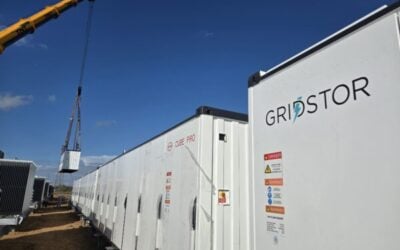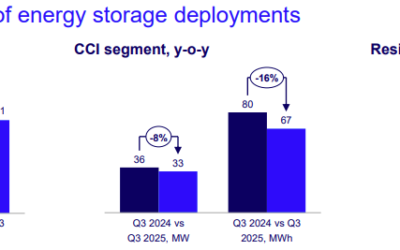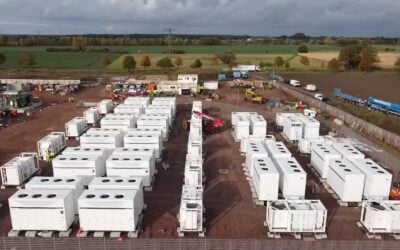
There is more work to be done on ensuring alignment between maximising grid-scale battery revenue and maximising system benefits, said panellists on Day 2 of the Energy Storage Summit.
Today’s (23 February) ‘Maximising Revenues for Grid-Scale Batteries’ panel at the event hosted in London by our publisher Solar Media kicked off with a discussion around how closely maximising the revenue of a battery storage asset correlates with maximising its value to the system in today’s market.
“The problem comes when what the system needs is not priced correctly or being contracted properly. The more granularity we have on locational pricing the more efficiently we can provide services to the system,” said James Mills, managing director of Adaptogen Capital.
Rosalind Smith-Maxwell, VP at Quinbrook Infrastructure Partners suggested a mechanism whereby the carbon intensity of a battery’s energy could be traced and remunerated accordingly.
Try Premium for just $1
- Full premium access for the first month at only $1
- Converts to an annual rate after 30 days unless cancelled
- Cancel anytime during the trial period
Premium Benefits
- Expert industry analysis and interviews
- Digital access to PV Tech Power journal
- Exclusive event discounts
Or get the full Premium subscription right away
Or continue reading this article for free
“The world is putting an ever increasing cost on carbon. Could we do that on a battery’s energy? If it’s been powered with green energy will there be a premium for that power?”
Steffen Schülzchen, CEO and co-founder of Germany-based battery optimiser Entrix gave the view that the market’s value for revenue and system benefits is “pretty well aligned” today, but that more could be done on the grid side.
“From a grid buildout perspective it would be interesting to look at this more. The grid operators are not as fast they could be (in connecting projects) because they do not see the value of storage yet,” he said.
The discussion moved on to the role of optimisers and the level of AI-led automation to apply to battery storage market participation. Andy Hadland, Head of Technologies, EMEA, Eku Energy said that it was complicated question and one which would become more relevant over time.
“There are a lot of different potential levels of automation and you need a different level for each market. Something with lots of information and data clearly benefits from automation. Bidding into FFR (an ancillary service) once a month clearly doesn’t. It sounds complicated, and it is,” he said.
“Most developers in the UK market currently have five or six battery projects. When that grows to 10, or 15, or 20 will they be able to maintain the same returns across all of those without automation? Especially as we move to more wholesale energy trading.”
On the other hand, the size of projects managed by AI-led optimisers would grow in the future and this would change the dynamics between developer and optimisers, said Smith-Maxwell.
“We have two optimisers (Habitat Energy and Flexitricity) and having those capabilities in-house is the way we are going about increasing the value of our batteries,” she said.
Asked by an anonymous audience member why Quinbrook opted to buy two optimisers, Smith-Maxwell replied diplomatically: “Both are great and both have different strengths. Both manage both third-party and in-house asset and I’d happily give a contract to either.”
Looking further ahead, Mills said it was very hard to predict what the future revenue stack would look like and what new opportunities lay ahead but that project owners could put in the work now to ensure they are ready.
“We can’t know what the new opportunities will be in five years time. But we can say it will be varied. What we can do is extend the envelope of flexibility now because we don’t know what the products will be in 5-10 years.”





